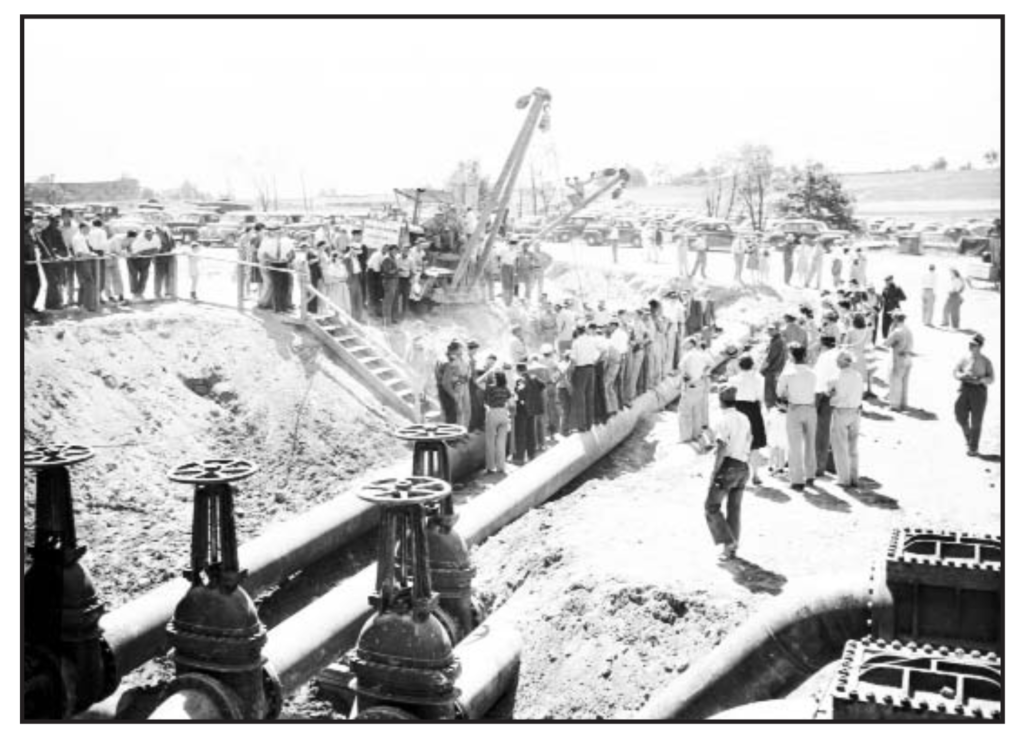
The United States entered the Second World War in 1941, which brought, shall we say, a reaction from Germany. Part of that reaction was sending U-boats to the eastern sea routes, where they proved pretty effective at sinking our oil tankers that brought oil up to the northeast from the Gulf of Mexico. 46 tankers were sunk and another 16 damaged just from January through April of 1942. One report says that the US lost a quarter of its oil tankers that year. Shipments shifted to rail but the infrastructure wasn’t really ready; there weren’t nearly enough rail cars to handle the need, and inland barges were inefficient. Pre-war planning had been underway, however, and the federal government had a plan to build pipelines, the biggest that had ever been built, and one of them, known as the “Big Inch,” came right to Phoenixville.
(Well, the location is universally reported as Phoenixville in all the media of the day. But it is really closer to Eagle; back in 1943, no doubt Phoenixville was the biggest place around.)
Big Inch was a 24-inch pipeline that ran from Longview, Texas to Norris City, Illinois, and then on to Phoenixville, PA. A parallel pipe was known as “Little Big Inch,” intended to carry lighter products like kerosene. Here the pipeline branched into 20-inch segments that served New York City (Linden, NJ) and Philadelphia (Chester Junction, PA). The line was put together with incredible speed; pipe was being fashioned by July of 1942. Just 350 days after construction began, a ceremony was held in Eagle, near Phoenixville to mark the final weld of the Big Inch (July 19, 1943). The picture above was taken just before the pipe was dedicated. Oil was flowing to Philadelphia by August 15, hitting the junction just the day before. It had taken a month just to flow from Norris City.
You might think that in those early days of the war, when there was concern about military secrecy and sabotage, that a national security project of this type might have been kept at least a little quiet. But to the contrary, it almost seems as if they couldn’t publicize this pipeline enough, as part of war-time propaganda. As the Wikipedia page for Big Inch notes, newsreels gushed Pipeline Goes Through! and Pipe Dream Comes True-Oil!, and short films were made about the construction work, including Pipeline.The pipelines also appeared in the RKO Pathé film Oil is Blood. Interior Secretary Harold Ickes attended the dedication ceremony. Big Inch was not kept quiet.

After the war, the pipelines were privatized and sold to TETCO, and converted for use transporting natural gas. Little Big Inch was converted back to oil around 1957. Both Big Inch and Little Big Inch are on the National Register of Historic Places.
If you want to know more about the Big Inch, its Wikipedia page has more.
And a very good summary put out by TETCO is at this link.

Leave a Reply